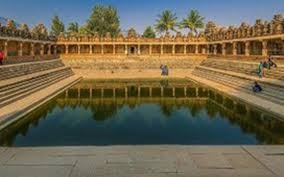
Nolamba Dynasty

30.11.2023
Nolamba Dynasty , Daily Current Affairs , RACE IAS : Best IAS Coaching in Lucknow
|
For Prelims: About Nolamba Dynasty,Important points,Background,Major temples of Nolamba,Fall of Nolamba Dynasty |
Why in news?
According to recent research, ancient inscriptions, hero stones and sculptures of Shiva Lingam and Nandi related to the history of Nolamba Pallavas have been discovered.
Important points:
- Historian Myna Swamy said ancient inscriptions, hero stones and sculptures of Shiva Lingam and Nandi were found in Cholemarri village, 22 km from Penukonda in Sri Satya Sai district.
- According to Maina Swamy, a fierce battle took place at Cholmeri between the Nolamba Pallavas and the Bhana-Vaidamba rulers in the ninth century AD.
About Nolamba Dynasty:
- The Nolambs ruled a region traditionally called Nolambavadi, which extended across south-east Karnataka and parts of Tamil Nadu and Andhra Pradesh, from the 8th to the 12th century AD.
- He was one of the important political powers of South India.
- They ruled first as feudatories of the Pallavas, Chalukyas of Badami, Gangas and Rashtrakutas and later the Chalukyas of Kalyani.
- In many inscriptions Nolamba generally refers to himself as Nolamba Pallava.
- Their earlier capital was Chitradurga, which they later shifted to Hemavati in modern Andhra Pradesh.
- Hemavati was the capital between the 8th and 10th centuries AD.
Background:
- Mangala Nomabathi king (735–785 AD) is considered the founder of the Nolamba dynasty.
- Inscriptional evidence suggests that he came into existence as governor when the Pallavas and Chalukyas were the supreme powers.
- With the capture of Badami by the Pallava ruler Mamalla Narasimhavarman I, the Chalukyas ceded to the Pallavas the areas that were ruled by the Banas and Vaidumbas.
- Thus Banas and Vaidumbas became feudatories of Pallavas.
- The Nolambas, who probably belonged to the Pallava family, ruled the area adjacent to these lands of the Pallava feudal lords, namely the Banas and Vaidumbas.
- Sometime later, during the reign of Vikramaditya I, the Chalukyas regained their lost territories. Thus the Banas and Vaidumbas had to change their political relations back to the Chalukyas.
- The Pallava chiefs, who were adjacent to Banas and Vaidumba, were defeated by the Chalukyas, who soon came under their protection. These Pallava chieftains soon came into existence under the name of "Nolambas".
Major temples of Nolamba:
- Three grand temple complexes are attributed to the glory of this dynasty.
- Kalleshwara Temple at Arlaguppe.
- Bhoganandishwara Temple in Nandi.
- Ramalingeswara Temple in Avani.
- Nolamba was a Shaivite, and the temples built by him were dedicated to Lord Shiva.
Fall of Nolamba Dynasty:
- Nolamba was captured by the Ganga king Marasimha, who claimed to destroy the Nolamba family.
For this reason he was given the title of Nolambakulantaka.